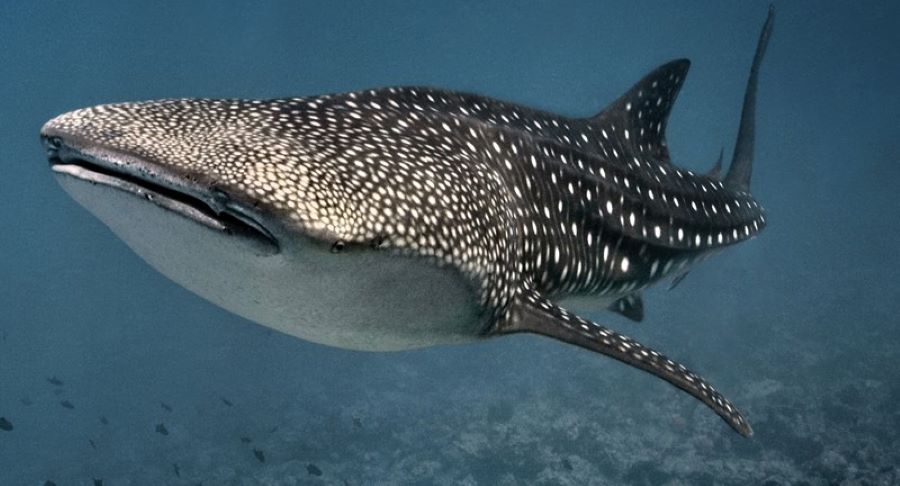It was my second day out on Saleh Bay, and I still hadn’t fully processed that I was swimming next to the largest fish in the ocean. The water was so calm it felt like silk, and the air smelled faintly of salt and wood smoke from nearby fishing boats. Our guide had just pointed out a shadow moving under the bagan—a slow-moving, spotted silhouette—and with that, we slipped into the water.
There it was. Massive. Gentle. Beautiful. A whale shark, gliding so close I could see the white dots on its dorsal fin and the movement of water through its gills. I floated next to it for what felt like forever, fully aware I was in the presence of something extraordinary. But what really blew my mind came later, when we were back on the boat drinking hot ginger tea. One of the guides casually said, “By the way, whale sharks don’t have teeth.”
Wait, what?
No teeth?
You’re telling me this enormous shark—this ancient, filter-feeding legend—eats without a single visible chomper?
Yep. It’s true. Whale sharks have no usable teeth in the way we usually imagine. And that fact alone changed how I looked at them forever.
Let’s dig into that a little, shall we?
First, the technical part. Whale sharks are indeed sharks, and like most sharks, they do have thousands of tiny teeth. The difference is, they don’t use them to eat. Their teeth are minuscule—barely a few millimeters—and set in over 300 rows inside their mouth. But they don’t chew, bite, or hunt like great whites or tiger sharks. Instead, they filter-feed, pulling in huge gulps of water and straining out plankton, tiny fish, and other microscopic meals.
Their feeding method is, honestly, more whale-like than shark-like. Which is probably why people often confuse them for actual whales. They swim with their mouths open wide, letting the water rush in. Then, using special filter pads in their mouth, they separate food from water, push the water out through their gills, and gulp down the good stuff.
It’s kind of like how baleen whales eat krill—but with different tools.
This makes the whole “shark” thing feel a little ironic. The name “whale shark” almost feels like a contradiction. You expect a razor-toothed predator, and what you get is a slow, friendly plankton vacuum. They don’t bite. They don’t hunt. They barely even care that you’re swimming next to them.
And that’s exactly what makes them so easy to love.
When you join a whale shark expedition Indonesia, especially in places like Saleh Bay, one of the first things you’ll notice is how relaxed everything feels. No rush. No chaos. Just early mornings, warm water, and the slow dance of nature playing out in front of you.
Whale sharks glide through the sea with such grace and calm that even first-time snorkelers feel at ease. I’ve seen kids as young as ten and grandparents in their sixties bobbing next to them, totally mesmerized. There’s no fear—because there’s nothing to fear.
Knowing they don’t have teeth you can see (or use) changes the whole experience. You don’t feel like you’re in a cage-dive documentary. You feel like you’ve been invited into a peaceful, ancient ritual—one where the ocean sets the pace.
I remember drifting next to a whale shark that must’ve been at least eight meters long. It was swimming with its mouth wide open, filtering the cloudy, plankton-rich water just under a bagan. You could actually see the water moving through its mouth and out through its gills. It was like watching a live machine—but gentle, slow, and totally effortless.
Our guide that day was named Idris. He grew up on the coast, learning the ocean from his father, who fished in these same waters. He told us, “When I was a kid, we used to think whale sharks were spirits of the sea because they moved so slowly and came without warning.”
He grinned as he added, “Now we know they come for the food. But I still think they have magic.”
It’s this combination of marine biology and folklore that makes places like Saleh Bay so special. You’re not just seeing wildlife—you’re being welcomed into a community that respects it. The guides aren’t just quoting facts; they’re sharing stories. And those stories make the science even richer.
Words like “gentle giant,” “plankton filter,” “harmless shark,” and “ancient traveler” come up often in these conversations. They’re not just catchy phrases—they describe exactly what you feel in that water.
And if you’re lucky, during your expedition, you’ll witness something rare—whale sharks feeding vertically, their mouths pointed straight up, as they suction floating plankton from the water like a milkshake. It’s weird. It’s wild. And it’s wonderful.
You’ll also notice that the best guides don’t push you to get closer. They’ll say things like “let the shark come to you” or “don’t block its path.” This isn’t just etiquette—it’s conservation. It’s part of why Whale Shark Saleh Bay has built such a solid reputation for ethical wildlife interaction. They know these animals don’t need to be chased or touched. They need to be respected.
Which brings me back to the teeth thing.
There’s something poetic about a creature so big, so awe-inspiring, that chooses to eat the tiniest things in the ocean. No drama. No violence. Just rhythm, repetition, and patience.
I’ve been lucky to snorkel with whale sharks several times now, and every encounter feels different. But that moment of realization—that they don’t have functional teeth—sticks with me every time. It’s like discovering your favorite monster is actually a monk. It softens you. It invites wonder instead of adrenaline.
And maybe that’s why so many people come away from their whale shark experience not just impressed, but changed. You don’t just learn something new. You feel something new. A quiet respect. A sense of harmony.
And when that moment ends, and you’re back on the boat with sun-warmed skin and salt in your hair, you look out at the horizon and think… yeah. That was real.
So the next time someone asks if whale sharks are dangerous, you can smile and say, “Did you know? They don’t even have teeth.”
Then you tell them about Saleh Bay. About the quiet mornings, the gentle gliders, and the kind of encounter that stays with you long after your wetsuit has dried.
Let them know that in a little corner of Indonesia, you found something wild—and it didn’t need to bite to take your breath away.

